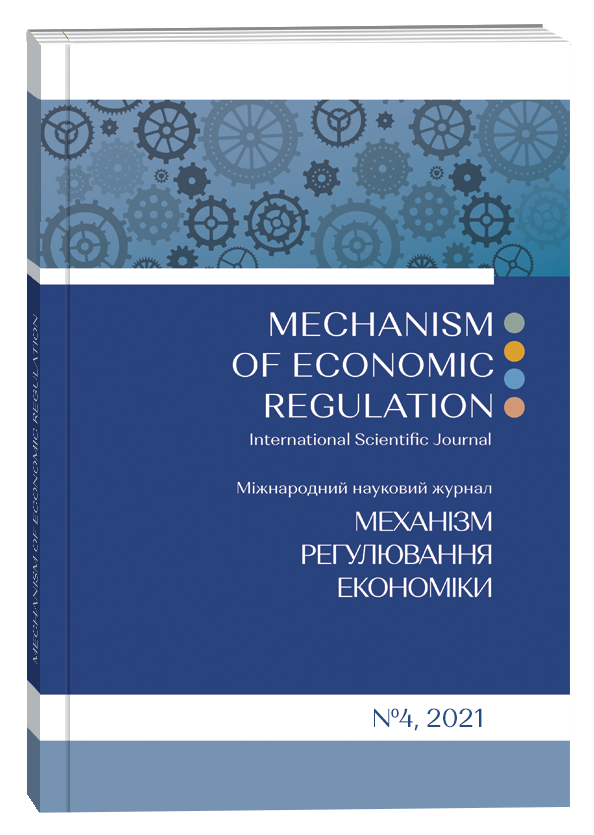RELATIONSHIP BETWEEN THE COMPETITIVENESS OF THE LABOR POTENTIAL OF THE TERRITORY AND ITS BRAND
Abstract
Ensuring sustainable development of regions directly depends on the ability of local governments to make effective management decisions to address socio-economic problems of the population. This responsibility was further strengthened with the beginning of the redistribution of power between central and local authorities in 2015 due to the beginning of the decentralization process. This reform involves changing the administrative-territorial structure, redistribution of financial flows and tax revenues, and reducing the central government's influence on local decision-making. Although it makes significant changes in the work of the state and local apparatus, it does not affect the solution of the biggest problem in Ukraine – the demographic crisis caused by population decline, both naturally and through increasing migration to more developed countries. Furthermore, although the growth of local budgets allows local governments to increase the number of social projects aimed at meeting the community's needs, without an effective model of the belief that these measures are implemented primarily to meet the needs of their population, they are ineffective. In this context, it is practical to move away from the standard principle of here and now and build a long-term development strategy for the region based on its geographical, social, cultural, historical, and business opportunities. To this end, most countries and cities are beginning to form their brands, one of the key tasks of which is to attract potential human capital from other territories or countries, both in the short and long term, and maintain their labour potential. However, the growing number of brands in the territories leads to the need to assess the effectiveness of such an approach to ensure the competitiveness of the labour potential of the region. Therefore, based on the above, the purpose of the article is to study the problem of providing human resources to the territory and their competitiveness through the prism of local brands. The evaluation methodology is partly based on the methods used to form the indices of national and local brands of Anholt-Ipsos and the Municipal Competitiveness Index.
References
Anderson V. Regional competition as a factor of socio-economic development of Ukraine in the context of globalization. URL: https://www.wilsoncenter.org/sites/default/files/media/documents/publication/Agora04.pdf
Anholt, S. (1998). Nation-brands of the twenty-first century. Journal of Brand Management, 5(6), 395−406
Anholt, S. What is competitive identity? In Competitive identity. Palgrave Macmillan, London. 1998. Р. 1−23.
Anholt, S., Hildreth, J. Brand America: The Mother of All Brands (Great Brand Stories series). 2005. 192 p.
Antoniuk, L. (2005). International competitiveness of countries: regional aspect. International economic policy, 1(2), 49−68.
Brand book of L’viv. URL: https://city-adm.lviv.ua/news/government/12525-u-lvovi-rozroblenijbrendbuk-shhodo-log-
Brand of Chernihiv. URL: http://pik.cn.ua/print/7239/.
Brand of Khmelnitsky URL: https://vsim.ua/Podii/u-hmelnitskomu-obrali-brend-mista10674984.html.
Brand of Ternopol. URL: https://doba.te.ua/post/15377.
Brykova, I. V. (2005). Theoretical basis of international competitiveness of region. Economy and Entrepreneurship, 15. Р. 27.
Competitiveness of Ukrainian cities. URL: http://www.ier.com.ua/ua/mci.
Expert chat: José Torres on city brand fundamentals. URL: https://web.archive.org/web/20150402160437/http://placesbrands.com/expert-chat-jose-torres-oncity-brand-fundamentals/#
Fan, Y. (2006). Branding the nation: What is being branded? Journal of vacation marketing, 12 (1), 5−14.
Fatkhutdinov, R. A. Strategy of Competitiveness. 2005. 504 p.
New Logo of Ivano-Frankivsk URL: https://kurs.if.ua/news/novyy_logotyp_ivanofrankivska_vynesly_na_sesiyu_miskrady_71663.html/
New official Brand of Vinnytsia vid Fedoriv. URL: https://www.the-village.com.ua/village/city/citynews/285281-noviy-ofitsiyniy-brend-vinnitsi-vid-fedoriv.
Place Brand Research. URL: https://www.ipsos.com/sites/default/files/ct/publication/documents/2021-05/Anholt-Ipsos.pdf.
Porter, M. Competitiveness. 2002. 495 p.
Porter, M. International Competitiveness. 2004. 896 p.
Report 2019/2020. URL: http://www.ier.com.ua/ua/mci/Report_19−20.
Report 2021. [Electronic resource]. – Resource access mode: http://www.ier.com.ua/ua/mci/index_2021.
Rove Maison. Company’s competitiveness. 2000. 300 p.
Sumy – with new brand and logo. URL: https://imi.org.ua/blogs/sumy-z-novym-brendom-ilogotypom-shho-napysaly-pro-tse-sumski-onlajn-media-i30922
The IMD World Competitiveness Center The IMD World Competitiveness Yearbook. 2012. URL: https://www.imd.org/centers/world-competitiveness-center/rankings/world-competitiveness/
Ukrstat. Migration. URL: http://www.ukrstat.gov.ua/operativ/operativ2021/ds/mr/arh_mr_tm.html.
Vasylenko, V. N., Kholodenko, O. Yu., & Budiakov, V. Ye. Regions’ Competitiveness: basis, assessment, and perspectives: monograph. 2008. 363 p.
Vidkrytyi tvorchyi konkurs z vyznachennia rozrobnyka brendu i brendbuku dlia mista Khmelnytskoho URL: http://brand.khm.gov.ua/.


